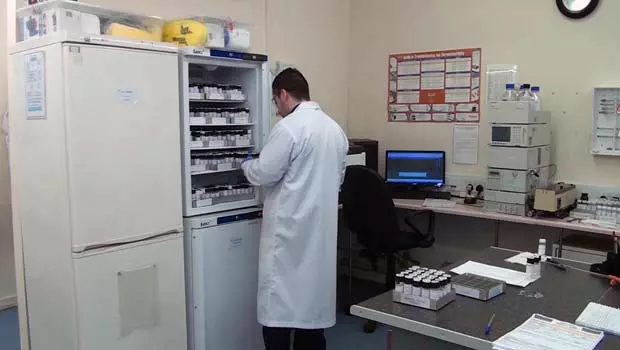MRP software for food/chemical manufacturers

The food and chemical industries serve up unique challenges for manufacturers, specifically around management of stock that often has a limited storage life and manufacturing processes that can differ based on the quantity being produced or method of production. Here we explore some of the common problems that many food or chemical manufacturers experience, how MRP solves them and what additional benefits it can provide.
Why do food/chemical manufacturers need MRP software?
Manufacturing either a food or chemical product comes under the umbrella of process manufacturing - whereby ingredients or raw materials are combined using formulas or recipes (otherwise referred to as a bill of material, or BOM) to create the finished product. In addition to food, beverages and chemicals this may also include products such as refined oils, pharmaceuticals and plastics.
Process manufacturing differs from general (discrete) manufacturing, as the final product cannot be disassembled into its raw parts, unlike, say, a car or computer. It is often more complex because it relies on sequential processes, which may also need to happen within a fixed time due to the process. Storing food products and chemicals may require different warehousing needs. Items may need to be kept either refrigerated or frozen. Furthermore, there may be additional restrictions, such as alcohol being held in a bonded store with consumption being logged for reporting to HMRC. Items may need to be quarantined, with not only stock movements tracked but also controlling which staff are authorised to do so.
Even the process of establishing an accurate cost for quoting can be difficult, as different manufacturing methods can require different recipes or formulations, changing the cost for both materials and production. Setup times, costs and wastage may differ across different manufacturing methods, which all must be taken into consideration when quoting.
There are also environmental considerations. Some chemicals are controlled or harmful (COSHH - Control of Substances Hazardous to Health), even in extremely small quantities, so it's important to keep track of what quantities were used and where. One stumbling block of many systems is that they are unable to handle trace elements of chemicals. For example, being able to track an ingredient to 0.00372kg requires the system to be able to track to five decimal places. (123insight tracks to six).
MRP systems can often be at odds with accounting packages, making it difficult to consume stock in one system in a way that can be reflected in the other. Items purchased in one unit of measure may need to be stored or consumed differently e.g., converting litres to kilograms.
Case Study: A company manufacturing sealants replaced their old production control system and collection of in-house databases with 123Insight. Stock was reduced by 60%, with stock accuracy improving from 88% to 99.9%. The ability to create different formulations for different routings for the same product was instrumental in their selection process.

How can MRP help quality for food/chemical manufacturers?
Maintaining quality (for health and safety reasons), when manufacturing food or chemical products is paramount, and many manufacturers will often adhere to multiple quality accreditations, depending on the industries they serve. In addition to ISO9001 and the environmental-focussed ISO14001, companies may also conform to industry-specific standards, such as BRC (British Retail Consortium) food safety and quality standard, EFSIS (European Food Safety Inspectorate Service) or FIAS (Fertiliser Industry Assurance Scheme).
Traceability is key - specifically being able to trace by batch or lot. Not only do you need to identify all the ingredients that have gone into, say, a confectionary bar, but you need to quickly find all bars that may contain a specific batch of any given ingredient.
Reporting is a major requirement of any MRP system, but more so for food and chemical manufacturers, with many products requiring a certificate of conformity or similar documentation to be supplied.
Although many companies may have a need for a robust manufacturing system it would be mandatory for them to already have competent quality control systems in place, assuming the relevant quality accreditation in place. Certificate of Conformity generation is automatic with 123Insight, providing traceability of batches of ingredients used.
Case study: A fragrance and flavour chemical manufacturer replaced their in-house database with 123Insight, implementing and going live in just four months. Turnover has since trebled with the same number of admin staff and a significant reduction in errors and paperwork. Their QCDB (quality control database) was integrated using 123Insight's SDK (Software Development Kit), saving one person's time each week.

How do food and chemical manufacturers implement MRP?
The implementation process can be trial and error when trying to create business or even manufacturing processes in a computer system for the first time. It is therefore logical to create one system, set up the most basic elements and then replicate this on a test system. Once each process is implemented and confirmed on the test system they can be copied over onto the live system.
An implementation plan that acts as your guide will keep everyone focussed on their tasks, as well as giving them visibility on the entire project. It is best to group and prioritise tasks so that the implementation process can be broken down into stages where each workflow can then be tested. Place deadlines against each one. It is then easy to filter this information from the plan, so that everyone has clarity over their workload.
These are some common column headers that companies would use:
- Department (e.g., Technical, Admin, Production, Stock etc.)
- Brief description of the task (usually 3-4 words)
- Estimated days for completion (could be whole or partial numbers)
- Is the task critical to the project or section? (Yes/No)
- Deadline date for the task to be completed by
- Allocated responsible person (the one who owns the task, usually a department head)
- Percentage completed.
- Days left (calculated from estimated number of days minus by percentage complete)
What benefits can food/chemical manufacturers see after implementing MRP?
As many, if not most food or chemicals will have an expiry date, one of the biggest benefits to implementing MRP will be in the stock room. FIFO (first in, first out) can be applied, with staff using 123Mobile on a tablet being warned if an item is out of date.
Case study: A company serving the agricultural industry replaced their Excel spreadsheets with 123Insight in just three months. They reduced lead times from 21 days to 5-10 days, improving cashflow due to better forward planning and used the system as the backbone to their ISO9002, ISO14001 and FIAS quality accreditation

During the manufacturing process there are often by-products which themselves can also be either re-used or sold. 123Insight can track the production of by-products, the amounts of which can then be subsequently booked into stock with a value against them.
Being able to track different methods of formulation based on the manufacturing method and equipment used is also critical. 123Insight allows for the ability to specify multiple methods of manufacture, coupled with version control. Differing material setup and scrap percentages along with alternate setup times can also be applied, ensuring accurate quotes for vastly different quantities of products.
To achieve the above offers greater flexibility in manufacturing terms and is a capability not to be found in many MRP systems; the alternative being to proliferate a series of 'bogus' part numbers.
Tasks such as being able to identify a product become easy and error-free, as barcodes can be attached when products are booked into stock and scanned using low-cost tablets or PC-based barcode scanners.
Companies may serve multiple markets or may perhaps create different brands for similar products. 123Insight has the capability to create 'divisions' that can separate these products, right down to the paperwork that is produced with them. Items such as quotes or delivery notes can carry completely different branding for specific divisions. Documents can also be stored against items such as products or works orders, making any relevant information available digitally across the entire company. Additional documents can be printed automatically - for example, a lab analysis sheet can be printed off alongside a works order.
For manufacturers where staff skills rather than the manufacturing process are often the bottleneck 123Insight's Skills Matrix can prove especially useful. Manufacturing processes can be configured so that only staff with the specific skill sets can perform them. As every process can be recorded using SFDC (Shop Floor Data Collection), 123Insight logs when a specific staff member clocks on and off each process. This could be extremely important if, say, a staff member in packaging or stores tests positive for COVID-19 and you must quickly track any items that they may have come into contact with.
In addition to logging which operator performed the task, SFDC can also record timings, down time and scrap (with reason codes). 123mobile builds on this further by allowing issuing of ingredients, for example from line-side refrigerated stock to orders.
Case study: A biscuit manufacturer that had originally looked at bakery-specific manufacturing software chose 123Insight as it was more flexible. The company has since quadrupled its turnover with the same number of admin staff, with stock only rising by 20%. Audits that took 4 hours now take 10 minutes, and 123Insight's skills matrix and SFDC are used to calculate performance-related bonuses for staff.

Summary
Food and chemical manufacturing have many areas that are common with other industries when it comes to MRP software, but managing those little differences is what will give you the edge. The ability to instantly demonstrate traceability for both raw materials and finished products to trace element level, plus tracking of by-products and waste is the finger on the pulse that manufacturers need.
Managing of recipes and formulations differs significantly from the bills of materials and routings found in discrete manufacturing, with many systems unable to cope with some of the more subtle yet critical requirements.
Having a system that can competently handle the little nuances within food and chemical manufacturing can allow you to grow your business and respond rapidly to change, while also freeing up staff from the mundane to focus on tasks that add more value.